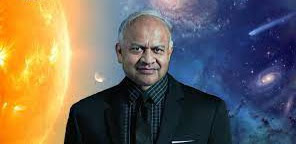WHAT DO DIFFERENT NUMBER PLATE COLOURS MEAN IN INDIA?
In India, vehicle number plates are more than just identification numbers—they also reveal the type of vehicle, its ownership, and its purpose. From private cars to electric bikes, diplomats’ vehicles to military trucks, the colour and format of a number plate carries important meaning. Here’s a comprehensive guide to understanding all types of vehicle number plates used across India.
1. White Number Plate (Black Text) – Private Vehicles
Used for: Private vehicles owned by individuals.
Purpose: Non-commercial, personal use only.
Example: Personal cars, bikes.
Note: These vehicles cannot be used to carry passengers or goods for payment.
2. Yellow Number Plate (Black Text) – Commercial Vehicles
Used for: Vehicles used for commercial purposes.
Purpose: Transport of goods or passengers for hire.
Example: Taxis, trucks, buses, delivery vans.
3. Black Number Plate (Yellow Text) – Rental Vehicles
Used for: Self-drive rental vehicles.
Purpose: Commercial use, but driven by private individuals.
Example: Rental cars and bikes from companies like Zoomcar or Bounce.
4. Green Number Plate – Electric Vehicles (EVs)
Used for: Fully electric vehicles.
Purpose: Promotes zero-emission transport.
Text Colour:
Private EVs: White text on green background.
Commercial EVs: Yellow text on green background.
Example: Electric cars, electric scooters, e-rickshaws.
Note: Hybrid vehicles are not eligible for green plates.
5. Red Number Plate (White Text) – Temporary Registration
Used for: Newly purchased vehicles awaiting permanent registration.
Validity: Typically up to 30 days.
Issued by: Dealers or Regional Transport Offices (RTO).
Note: Not to be confused with red plates used by dignitaries.
6. Red Number Plate with Emblem – Government Dignitaries
Used for: The President of India, state Governors, and similar high offices.
Features: No numbers; instead, the Emblem of India is displayed.
Note: The Prime Minister uses a regular white plate.
7. Blue Number Plate (White Text) – Foreign Diplomats
Used for: Vehicles of foreign diplomats and embassy officials.
Format: Country code (not Indian state code) + unique number.
Example: CD (Corps Diplomatique) or CC (Consular Corps) markings.
Purpose: Identification and diplomatic immunity.
8. Military Number Plates – Defence Forces
Used for: Indian Army, Navy, and Air Force vehicles.
Format: Two-digit year of purchase → Broad Arrow symbol → serial number (e.g., 21↔458329).
Background: Typically black with white text.
Symbol: The Broad Arrow (↔) indicates military/government property.
Note: Not registered with the RTO; governed by the Ministry of Defence.
Conclusion: Number plates in India are thoughtfully colour-coded to ensure quick recognition of a vehicle’s category, use, and ownership. Understanding these differences not only aids in identifying vehicles on the road but also reflects how India is adapting to changes like electric mobility and organised transport systems. Whether you're a driver, student, or enthusiast, knowing what each plate colour signifies can be both useful and fascinating!














